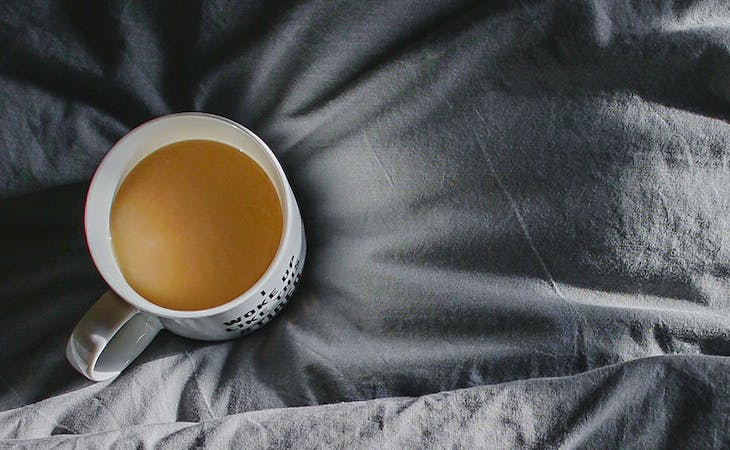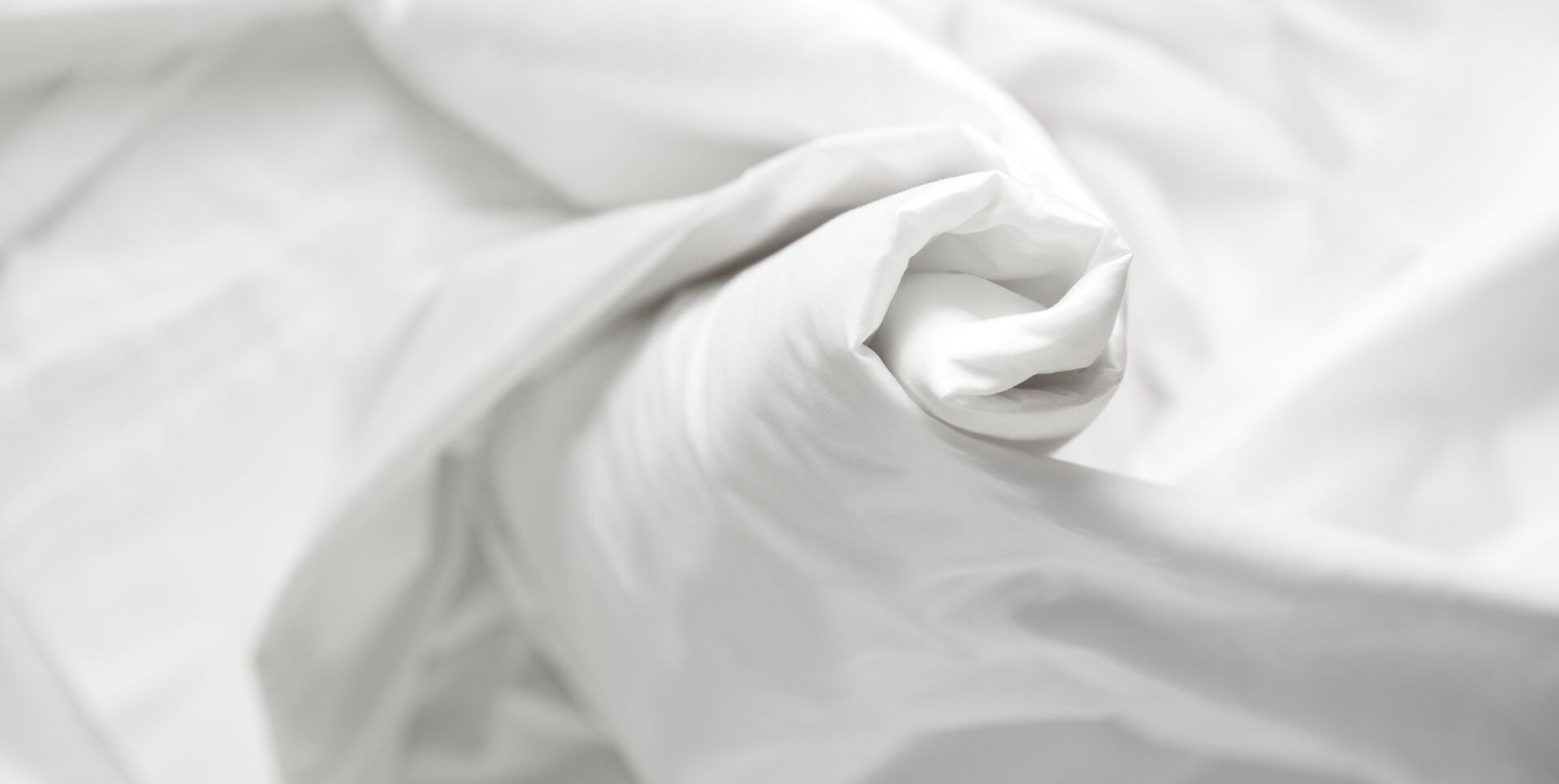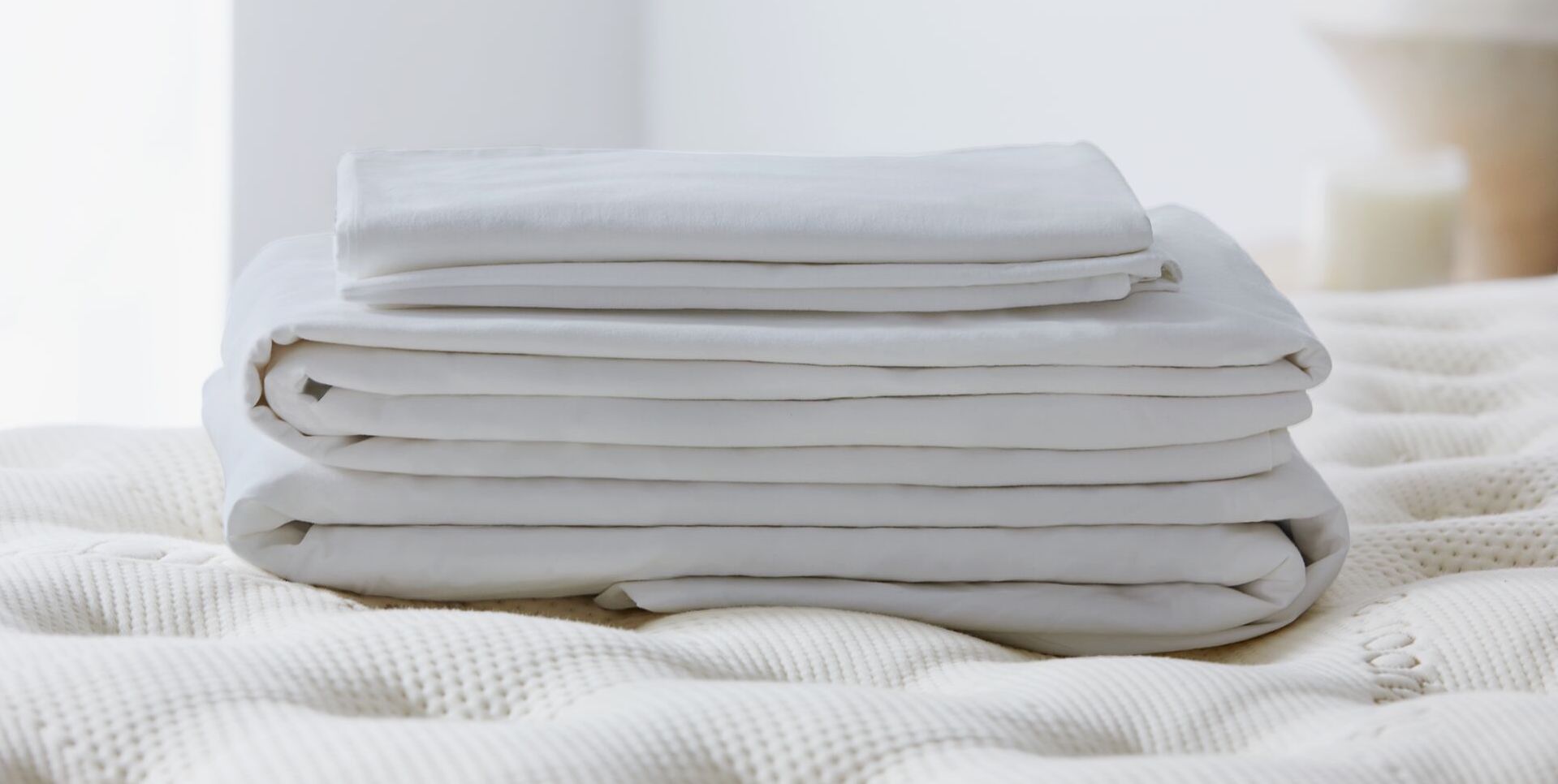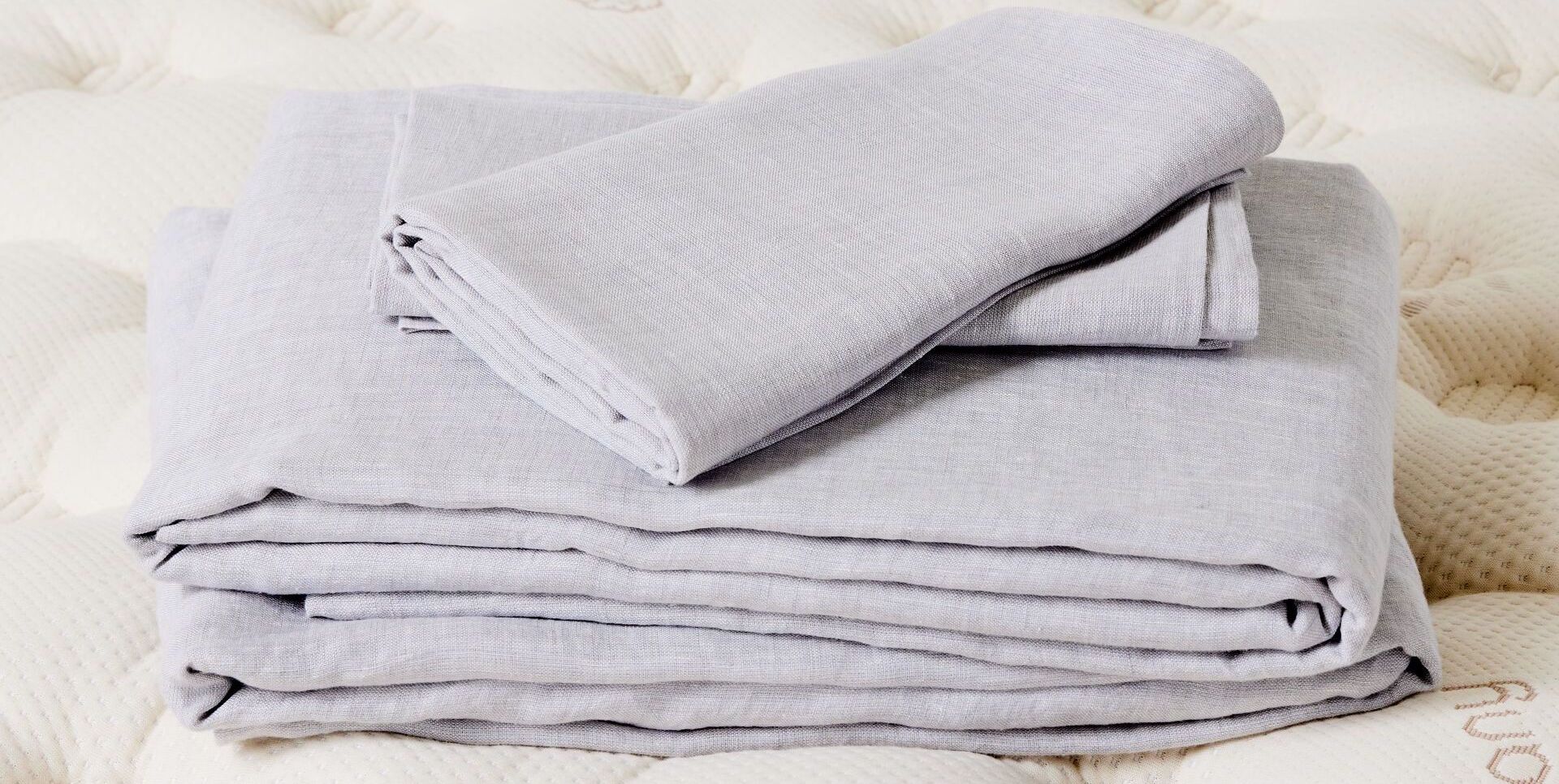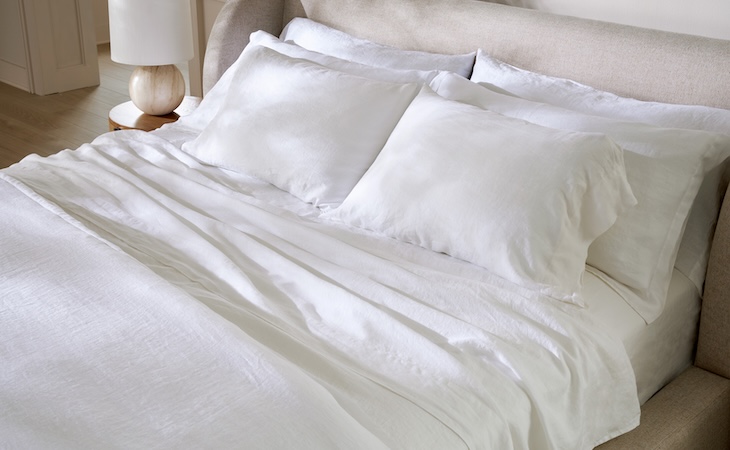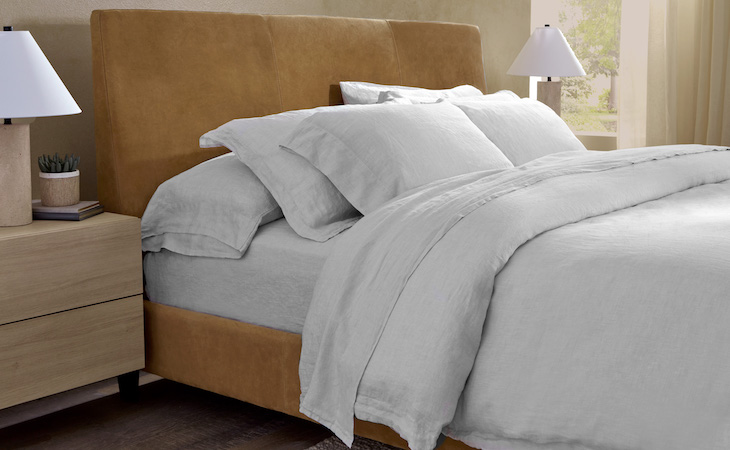When your bed’s one of your favorite places in the house, of course you’re going to want to do more than sleep there! But eating, working, and movie dates in bed also lead to grimy sheets and duvets.
The good news: “Many stains, including blood, bodily fluids, baby formula, and dairy products will come out if you presoak with an oxygen cleaner like Oxiclean in a sink or on the presoak setting of your washing machine,” says certified house cleaning technician Donna Smallin Kuper, author of Clear the Clutter, Find Happiness.
But chances are, you’ll get the best results by attacking each stain a little differently.
How to remove stains from your sheets
Scroll through this alphabetical list to find out how to remove 17 different bedding stains.
Blood
Soak fresh blood stains in cold water (not hot—the heat will set the stains!), then wash normally. If the blood is already dried, soak it in warm water and an enzyme cleaner such as one formulated for pet stains. Wash per usual, and if the stain doesn’t come out, wash one more time, using bleach. One last note: Don’t automatically throw sheets into the dryer after treating the stains and laundering. That will set any stain that remains, says Smallin Kuper. Instead, check to make sure the stain is gone before drying.
Candle wax
Treat a candle wax stain in the same way you would crayon (see below).
Chocolate
Scrape away any leftover chocolate, then treat as you would a coffee stain (see below): Soak in cool water, pretreat, and launder. Use bleach if the stain doesn’t come out in the first wash.
Coffee
Soak the stained area in cool water, then pretreat with a stain-removing spray, liquid detergent, or a paste made with water and powdered detergent. Next, wash with regular or oxygen bleach. If the stains are very stubborn or old and the above doesn’t work, try an enzyme stain remover, suggests the American Cleaning Institute (ACI).
Crayon
Scrape as much of the waxy color off as you can using a spoon, a credit card, or butter knife. Next, put the stained area between two clean paper towels and apply a warm iron—the melting wax will soak into the paper towels. (Be sure to check the paper towels and swap them out often!) Finally, put the stained side face down on a clean cloth or more paper towels and dab with a stain-removing liquid or dry-cleaning solvent before washing in the washing machine. If the stain persists, wash again with oxygen bleach or regular household bleach.
Gum
Rub the area with ice in order to harden the gum, then scrape as much of it away as you can with a spoon, putty knife, or butter knife. Next, soak with a small amount of rubbing alcohol or another very strong solvent (such as dry-cleaning solvent or even a tiny amount of lighter fluid). Rinse thoroughly, then launder.
Ink
Rubbing alcohol comes in handy if someone accidentally scribbles on your duvet or bed sheets. Laundering might set ink stains, so make sure you pretreat before throwing the linens in the wash, advise the experts at the ACI. Put the stained side of the sheet face down on a dry cloth or a stack of paper towels and dab alcohol in the clean areas around the stain before dabbing it on the ink. If this approach doesn’t work, take it one step further: Stretch the sheet tightly over the mouth of a mug or glass, then slowly drip the alcohol through the stain. The idea is that it will loosen the ink and draw it out as it drips into the glass.
Makeup
Cosmetics can be tough to get out depending on how strong the pigments are. For fresh, small spots, try blotting with a makeup remover wipe. For tougher or old stains, pretreat with a paste made out of a powdered detergent or cleaning booster (such as Oxiclean), suggests the ACI. The beauty experts at Glamour magazine swear by rubbing alcohol for waxy, oily lipstick: Just dip a cotton ball or the tip of a clean towel in alcohol, then dab and rub it on the smudge.
Milk or ice cream
Soak dairy-product stains in an enzyme removal product for half an hour, then launder in the highest temperature that’s safe for your sheets.
Nail polish
Nail polish is a tough one. For the best results, according to the ACI, put the stained side of the sheet face down on a dry cloth or stack of paper towels, soak a cotton ball in nail polish remover, and dab it on the back of the stain until the color fades. Rinse thoroughly with water, then wash as usual.
Oily food or lotions
Oils are some of the simplest stains to remove. First be sure to scrape away any leftover food or product residue with a spoon or the edge of a credit card, then pretreat with your favorite stain remover before washing. Rubbing alcohol, citrus-based cleaners, disinfectant sprays, and hydrogen peroxide are all good household stain removers, says Meg Roberts, president of Molly Maid cleaning service.
Related: 15 things to do with your old sheets (besides throw them away)
Sweat
A good prewash stain remover should be enough to bust fresh perspiration stains on sheets, according to the ACI. But if the discoloration is stubborn or old, try pretreating with white vinegar, an enzyme cleaning product (see below), or oxygen bleach and then washing on the hottest setting that’s safe for the fabric (check the care label on your bedding). (Here’s why you should change your sheets more often.)
Urine and vomit
When it comes to pet (or toddler) urine or vomit, the odor is just as concerning as the stain. That’s why Smallin Kuper recommends using an enzyme cleaning spray like those sold in pet stores. “Enzyme-based cleaners are the most effective do-it-yourself stain- and odor-removal products on the market,” she says. “The rule for stain removal is ‘like dissolves like,’ which is why organic enzymes work so well on organic stains and odors. The enzymes actually digest the stain-and odor-causing proteins.”
Wine
“A really great trick for removing wine stains from sheets or clothing is to mix equal parts blue dishwashing liquid and hydrogen peroxide. Apply to the stain and rub the material to loosen stain from the fibers,” says Smallin Kuper. Roberts also swears by Wine Away, a stain spray made especially for red stains from things like wine, juice, or spaghetti sauce.
FAQs
How do you get stains out of sheets after drying?
To remove old or dried stains from sheets, apply a small amount of hydrogen peroxide directly to the stain after soaking it in cold water. Reapply as needed.
What causes yellow stains on bedding?
Pet urine, urine, vomit, coffee, and oily foods or lotions can cause yellow stains on bedding.
For more cleaning tips, check out our guide to getting any stain out of a mattress.

